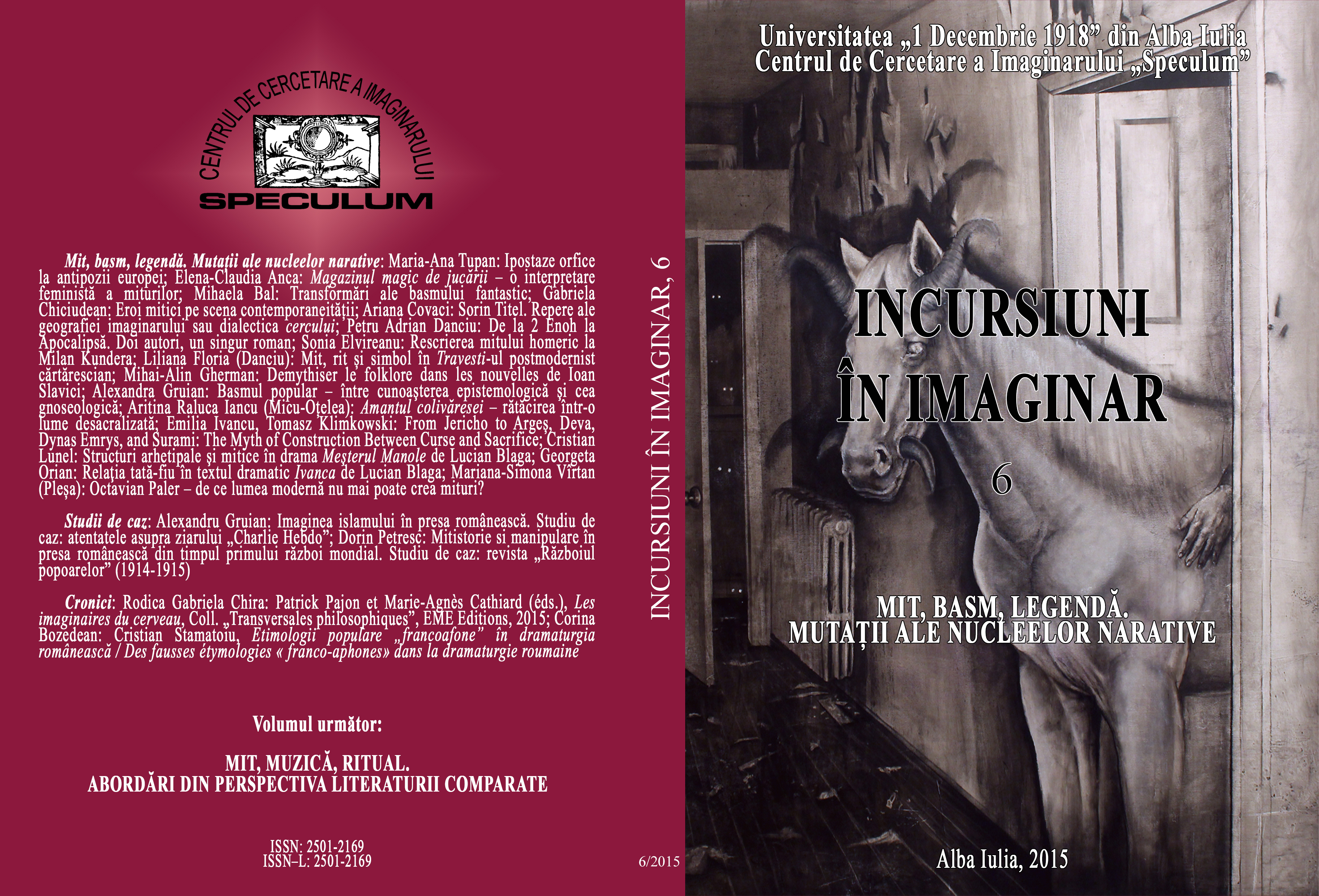BASMUL POPULAR – ÎNTRE CUNOAȘTEREA EPISTEMOLOGICĂ ȘI CEA GNOSEOLOGICĂ
THE FOLKTALE – BETWEEN THE EPISTEMOLOGICAL AND GNOSEOLOGICAL COGNITION
Author(s): Alexandra GruianSubject(s): Language and Literature Studies
Published by: Editura Aeternitas
Keywords: epistemological and gnoseological knowledge; fairy-tales; theory of the limit;
Summary/Abstract: The role of myths, as well as the role of tales, is to reiterate events from illo tempore, to win back the primordial time and "the archetypal gesture of the creating god" (Eliade, 1978, p. 31) and therefore, to maintain the world in the moment of the beginning and to promote "repetition compared to change, identity compared to difference.".We have attempted to emphasize the epistemological and gnoseological dimension of tales, since we believe that their role is to ask questions and to stimulate the discovery of answers leading to the knowledge of the world and of the Self. And, as the philosopher Constantin Noica said (1996), "when you ask a question (...) you shed light on things." (p. 13) Therefore, things are brought to light, they acquire the capacity to open up horizons, bring a suspension. Tales raise the question "what is?" the world we live in and "who are we?" in that world. The interrogation "regenerates" reality, doubles it, mirrors it by giving it an inverted image. Everything that surrounds us can be and is brought into question and by this the world can be known, new valences can be discovered and its meaning can be decoded.The attempt of humans to understand the world "expands the real to the possible, remakes it into possible, sees it in the immanence of its fulfilment as real, and then contemplates it in its accomplished reality." (Noica, 1996, p. 60) But aren't all these "steps" of the perception of the real as many moments in the spiritual evolution of the characters of folk tales? The debut of the initiatory path is an "expansion of the real to the possible", in which everything becomes possible. A new reality, the one beyond the border, has to be built. And the heroes witness its genesis, being an integral part of it, modelling, through their actions, the world which they enter. They are intruders in this new reality, perceived as dangerous especially since their appearance leads to a reconstruction of the world, which acquires new rules and new coordinates. The ending of tales is an image of that universe, which is accomplished just because it becomes a synthesis of the past and future, placed in an eternal present.The entire world is built from limits and limitations. In order to go beyond them, the heroes of tales have to travel in the infinite space of conscience. Freedom means putting some distance between themselves and the world, the crossing of a border "towards" becoming. DOI: 10.29302/InImag.2015.6.10
Journal: Incursiuni în imaginar
- Issue Year: 1/2015
- Issue No: 6
- Page Range: 129-136
- Page Count: 8
- Language: Romanian

